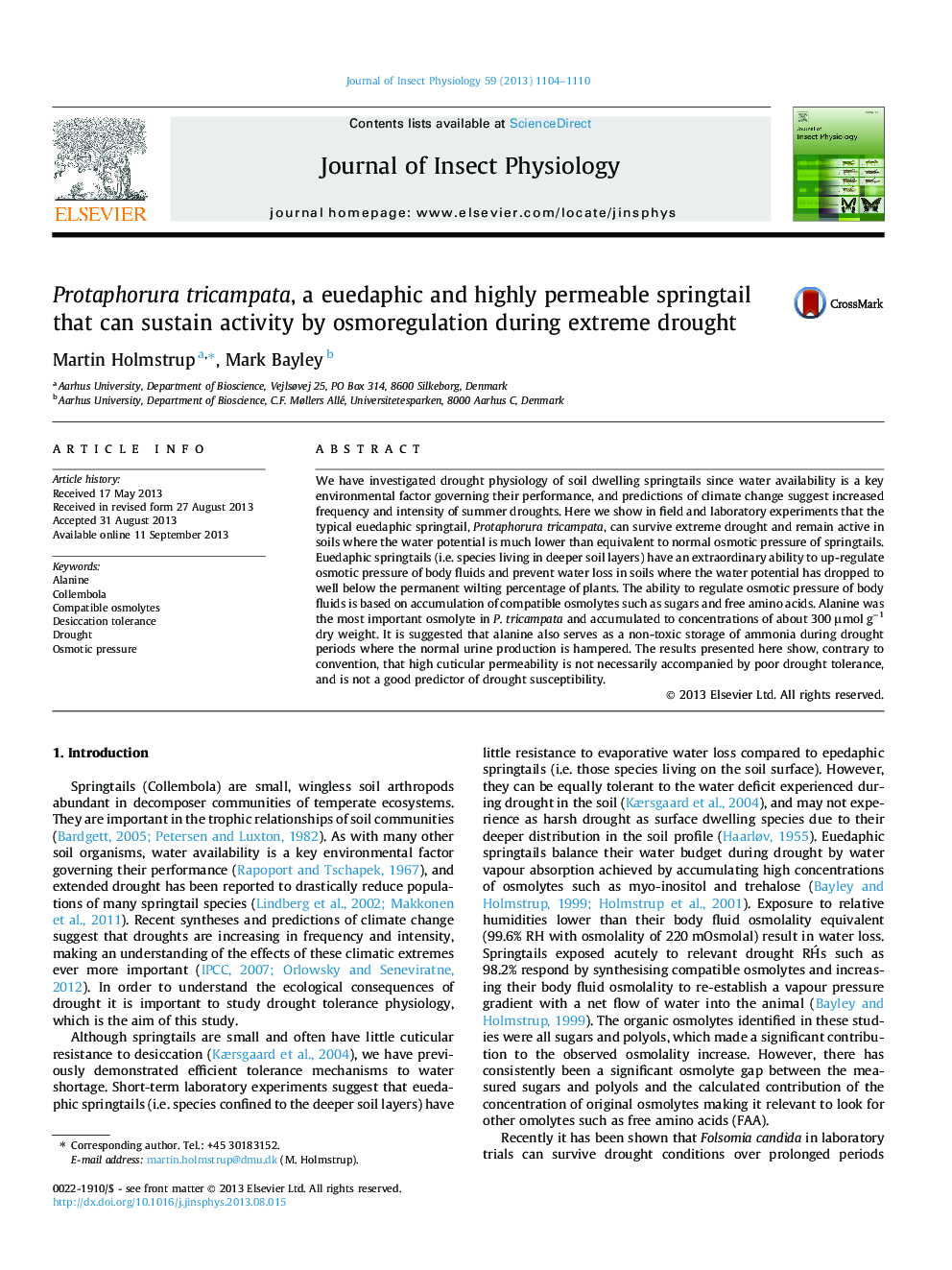| Article ID | Journal | Published Year | Pages | File Type |
|---|---|---|---|---|
| 2840474 | Journal of Insect Physiology | 2013 | 7 Pages |
•Protaphorura tricampata remain hyperosmotic and active at −40 bar soil water potential.•Regulation of osmotic pressure of body fluids is based on compatible osmolytes.•Alanine accumulated to concentrations of about 300 μmol g−1 dry weight.•High cuticular permeability is not a good predictor of drought susceptibility.
We have investigated drought physiology of soil dwelling springtails since water availability is a key environmental factor governing their performance, and predictions of climate change suggest increased frequency and intensity of summer droughts. Here we show in field and laboratory experiments that the typical euedaphic springtail, Protaphorura tricampata, can survive extreme drought and remain active in soils where the water potential is much lower than equivalent to normal osmotic pressure of springtails. Euedaphic springtails (i.e. species living in deeper soil layers) have an extraordinary ability to up-regulate osmotic pressure of body fluids and prevent water loss in soils where the water potential has dropped to well below the permanent wilting percentage of plants. The ability to regulate osmotic pressure of body fluids is based on accumulation of compatible osmolytes such as sugars and free amino acids. Alanine was the most important osmolyte in P. tricampata and accumulated to concentrations of about 300 μmol g−1 dry weight. It is suggested that alanine also serves as a non-toxic storage of ammonia during drought periods where the normal urine production is hampered. The results presented here show, contrary to convention, that high cuticular permeability is not necessarily accompanied by poor drought tolerance, and is not a good predictor of drought susceptibility.
Graphical abstractFigure optionsDownload full-size imageDownload as PowerPoint slide
